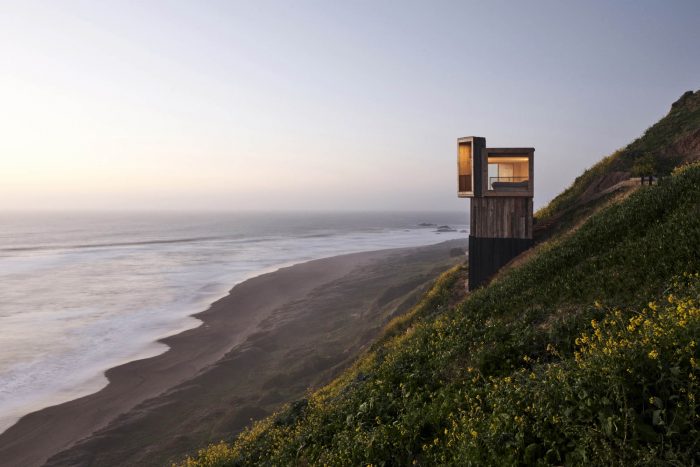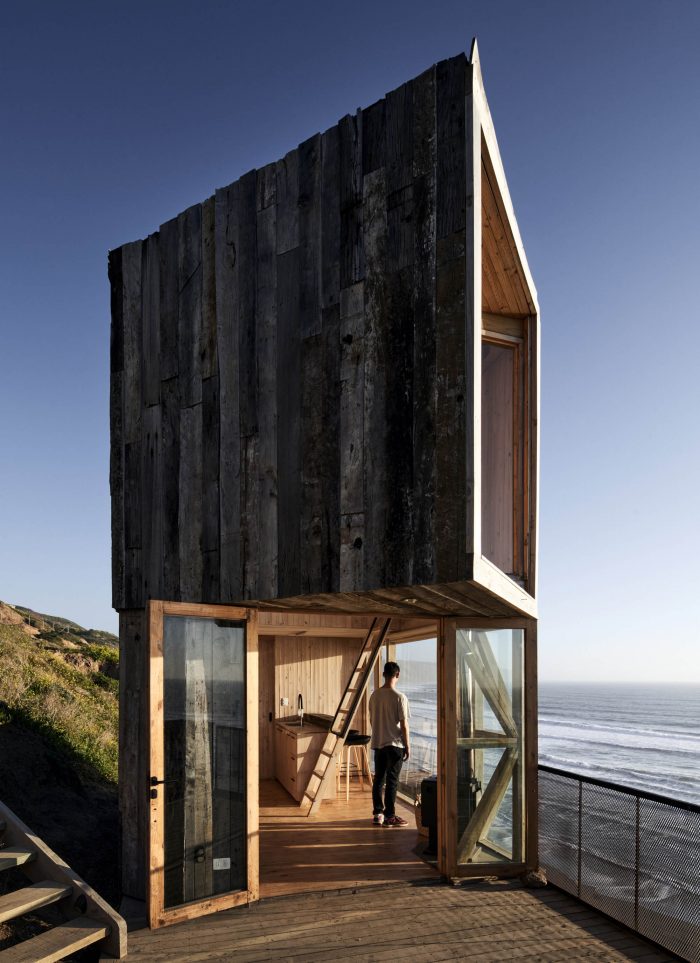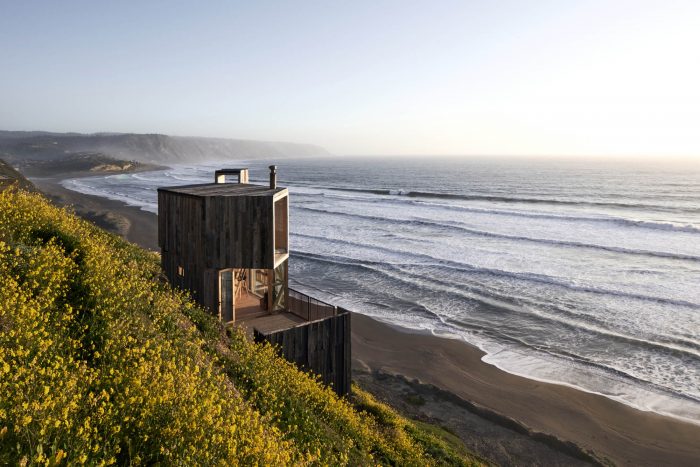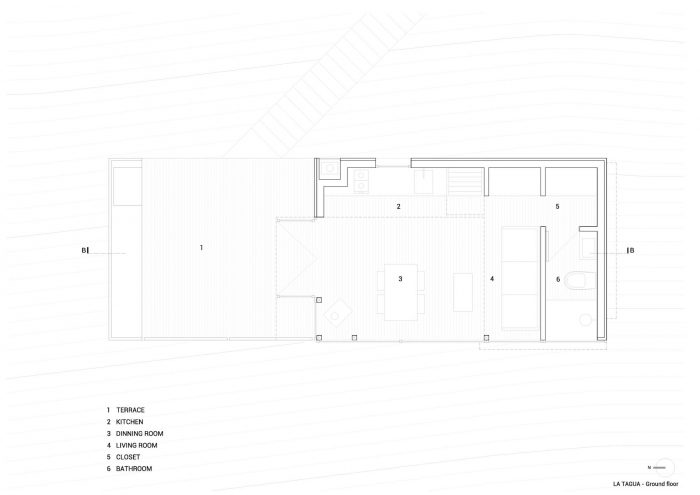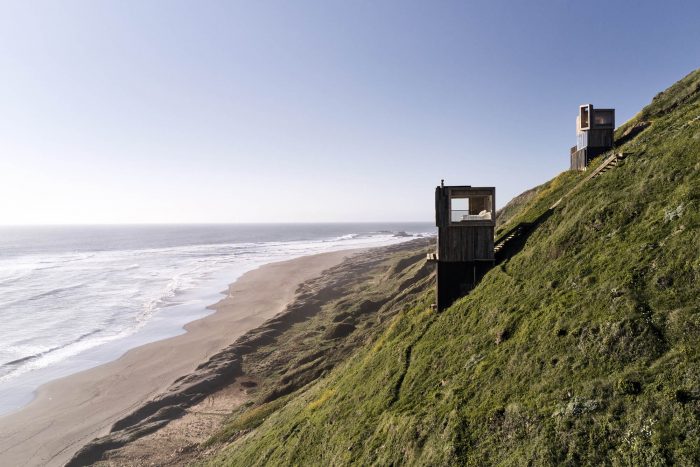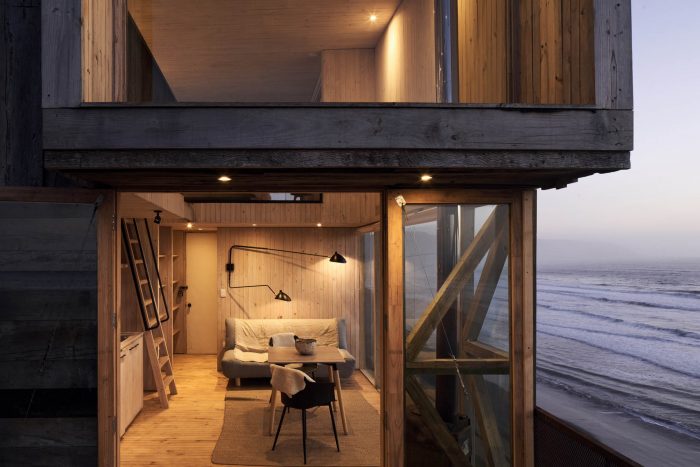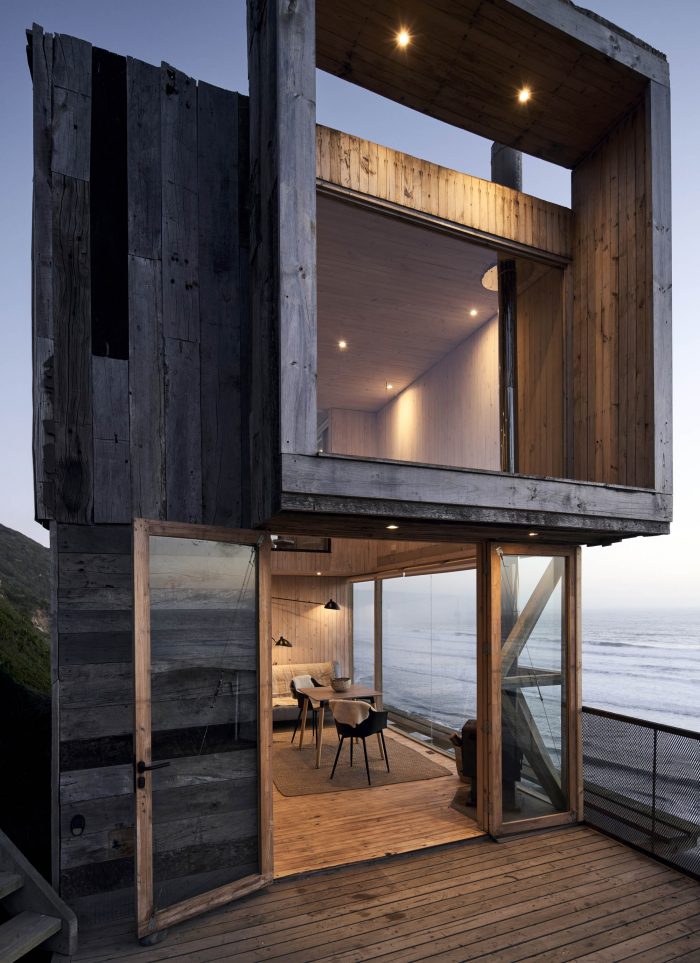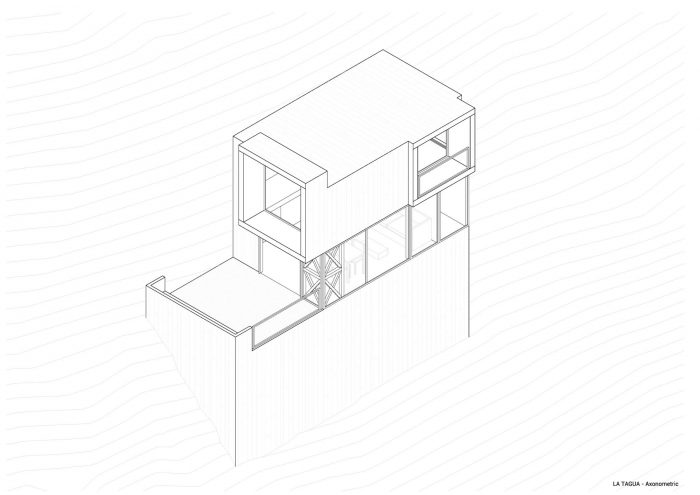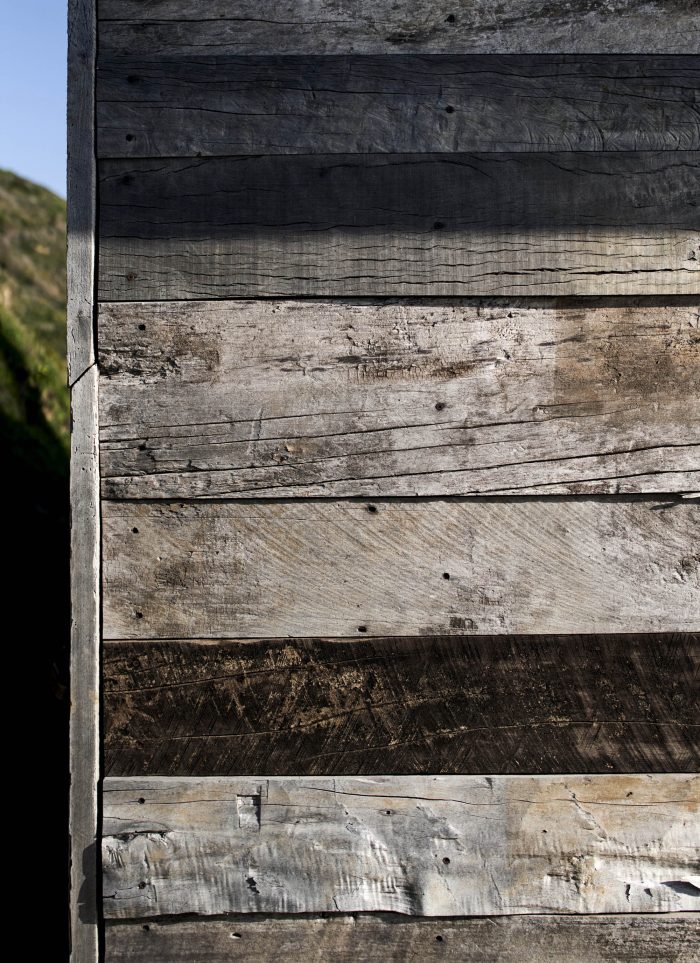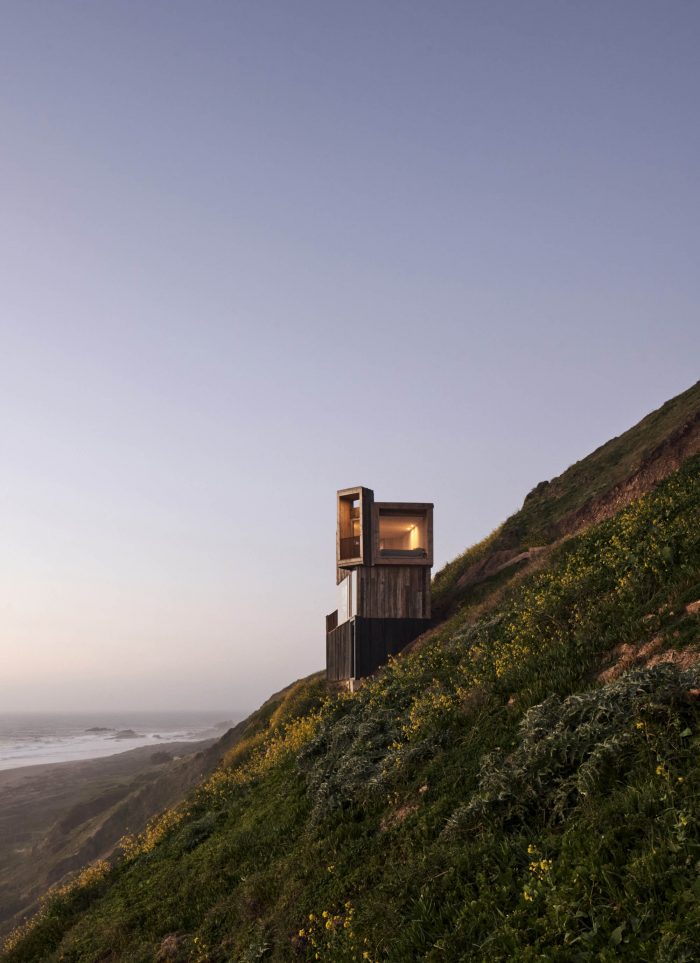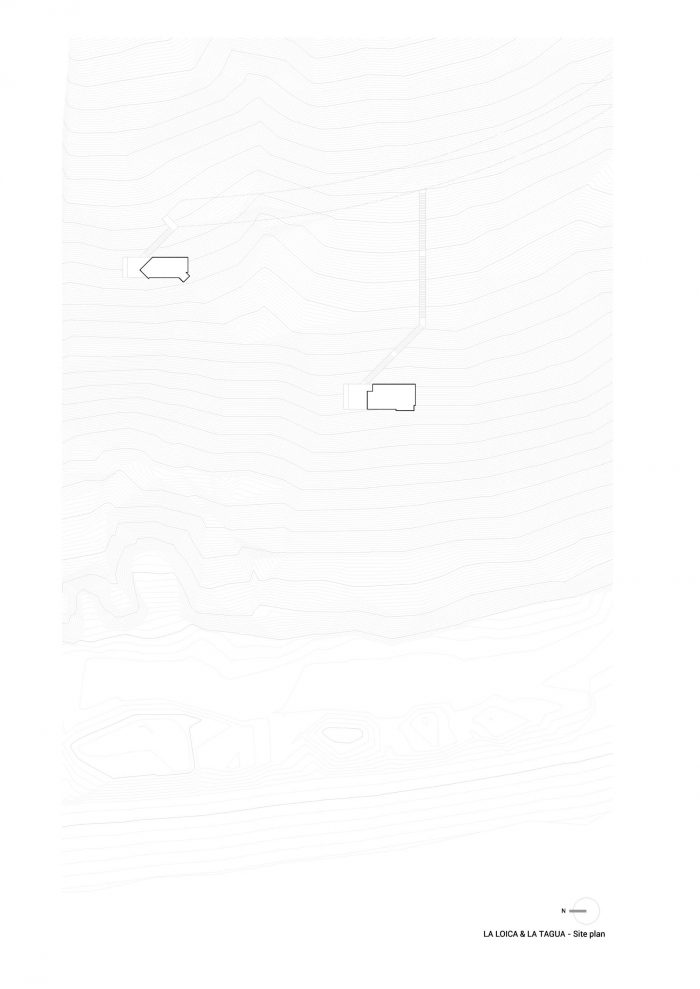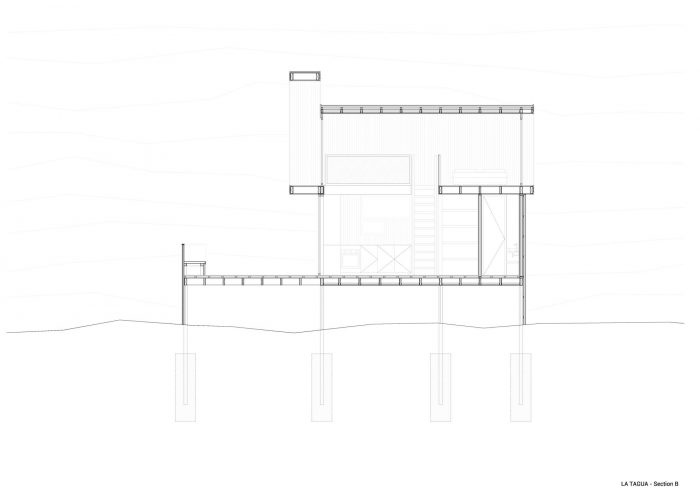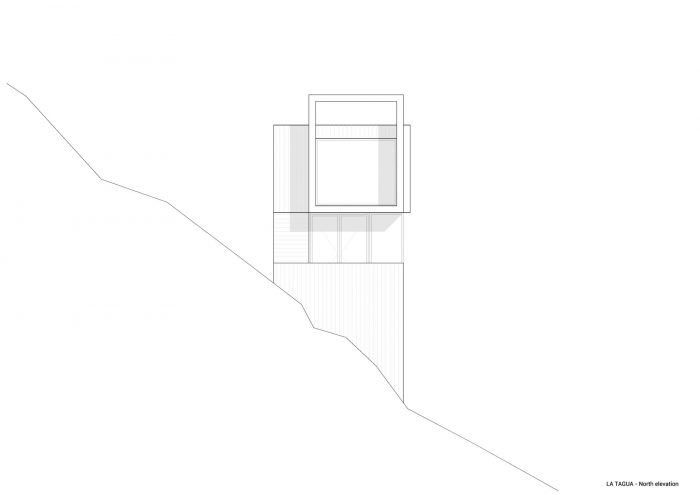这个项目是作为海岸边的度假屋而诞生的。这两座可容纳两人的小木屋位于纳维达省的马坦萨斯,距离圣地亚哥约2个半小时。小木屋位于海拔80米的拉古尼利亚山上,在 “洛贝拉 “前面耸立,这是一个突出于海面的大岩石群,是海狮和其他本地物种的家园。
This project was born as a holiday home on the coast. The two cabins for two people each are located in Matanzas, Navidad, approximately 2 ½ hours from Santiago. Placed 80 meters above sea level on the Lagunilla hill, the cabins rise in front of the “Lobera”, a large rock mass jutting out of the sea, home to sea lions and other native species.
马坦萨斯已经成为世界帆板运动和风筝冲浪的首都,这要归功于其出色的风浪条件。这两个元素都被有目的地纳入到项目的开发中。
设计过程被认为是一个实验的机会,寻找一种既能 “支配 “陡峭的斜坡又能与周围的自然环境相融合的方法。
Matanzas has become a world capital for Windsurfing and Kitesurfing, thanks to its outstanding wind and wave conditions. Both these elements were purposefully incorporated into the development of the project.
The design process was conceived as an opportunity for experimentation, looking for a way to both ‘dominate’ the steep slope and blend in with the surrounding nature.
“La Loica “和 “La Tagua “都是以该地区原生的鸟类命名的,它们被放置在峡谷中,使用一个木质的皮隆结构来支撑主平台,在这个平台上开发项目。
每个结构的面积都很小,”La Loica “为20平方米,”La Tagua “为25平方米。
“La Loica” & “La Tagua”, both named after bird species native to the region, are placed on the ravine using a wooden pilon structure that supports the main platform, over which the programme is developed.
Each structure is resolved in few square meters, 20m2 for “La Loica”, and 25m2 for “La Tagua”.
一个大的阁楼在视觉上和空间上都连接着内部的房舍。餐厅、浴室和厨房被布置在通道层,使用与建筑相融合的家具,以优化空间。大窗户被安装在西面的立面上,增强了 “盘旋在海洋上,主宰地平线 “的感觉。
在两个船舱中,主卧室都位于上层,可以通过一个垂直梯子进入。卧室通过双层高的起居室与空间的其他部分相连接,这种布局旨在框定和引导视线,指向南面的森林山丘和北面的岩石 “Lobera”。
A large loft connects the interior premises both visually and spatially. The dining room, bathroom, and kitchen are laid out on the access level, using furniture that merges with the architecture, to optimize space. Large windows are mounted on the western façades, enhancing the feeling of ‘hovering over the ocean, dominating the horizon.
In both cabins, the master bedroom is located on the upper level and can be accessed using a vertical ladder. The bedroom is connected with the rest of the space through the double-height living room, a disposition that seeks to frame and direct the view, pointing towards the wooded hills to the south, and the rocky “Lobera” to the north.
每个小木屋的门都可以打开,进入北部的外墙露台,作为与外部连接和互动的一种方式,并最终扩展内部空间。这也使得主体结构可以作为屏蔽来自西南的强风的屏障,巩固了露台的观点。
这两座建筑都是完全用木头建造的,在主体结构上使用了经过浸渍、室温干燥的松木,以提高长期性能。内部装修使用了1/2″×3 “的松木板,而外部的木材覆层是由回收的橡木枕木制造的。这种惰性材料经过石油油处理,提供了稳定性和抗海洋腐蚀的能力,并使其看起来与景观融为一体。
The access doors on each cabin can be opened wide into the northern façade terraces, as a way to connect and interact with the exterior, and ultimately extend the interior spaces. This also allows the main structure to act as a shield against the strong winds coming from the southwest, consolidating the terrace viewpoint.
Both buildings are built entirely in wood, using impregnated, chamber-dried pine on the main structures to improve long-term performance. For the interior finish ½”x 3” pine board was used, and the exterior timber cladding was manufactured from reclaimed oak sleepers. This inert material was treated with petroleum oils, which provides stability and resistance against marine corrosion, and gives it a look that blends in with the landscape.
Architects: Croxatto y Opazo Arquitectos
Area: 624 ft²
Year: 2018
Photographs: Cristobal Palma / Estudio Palma
Manufacturers: AutoDesk, Adobe Systems Incorporated, Kitchen Center, Trimble Navigation, Wasser, Wolf
Lead Architects: Nicolás Opazo Marchetti, Felipe Croxatto Viviani
Design Team:Martín Dellatorre, Daniela Mármol, Juan Quiroga, Maximiliano Valle
Engineering:Luis Della Valle Solari
Cabin Area “La Loica”:20 m2
Cabin Area “La Tagua”:25 m2
City:Matanzas
Country:Chile


